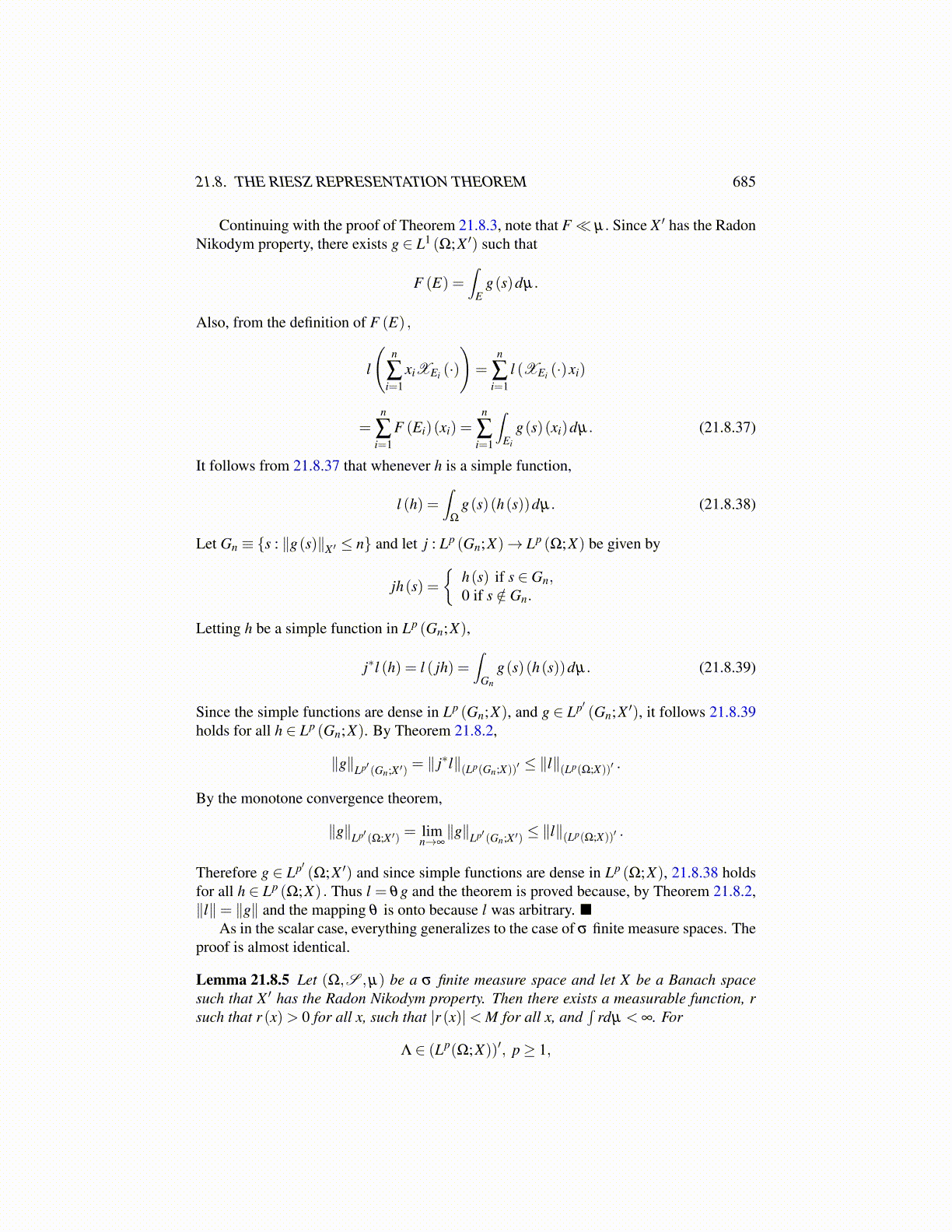
21.8. THE RIESZ REPRESENTATION THEOREM 685
Continuing with the proof of Theorem 21.8.3, note that F≪ µ. Since X ′ has the RadonNikodym property, there exists g ∈ L1 (Ω;X ′) such that
F (E) =∫
Eg(s)dµ.
Also, from the definition of F (E) ,
l
(n
∑i=1
xiXEi (·)
)=
n
∑i=1
l (XEi (·)xi)
=n
∑i=1
F (Ei)(xi) =n
∑i=1
∫Ei
g(s)(xi)dµ. (21.8.37)
It follows from 21.8.37 that whenever h is a simple function,
l (h) =∫
Ω
g(s)(h(s))dµ. (21.8.38)
Let Gn ≡ {s : ∥g(s)∥X ′ ≤ n} and let j : Lp (Gn;X)→ Lp (Ω;X) be given by
jh(s) ={
h(s) if s ∈ Gn,0 if s /∈ Gn.
Letting h be a simple function in Lp (Gn;X),
j∗l (h) = l ( jh) =∫
Gn
g(s)(h(s))dµ. (21.8.39)
Since the simple functions are dense in Lp (Gn;X), and g ∈ Lp′ (Gn;X ′), it follows 21.8.39holds for all h ∈ Lp (Gn;X). By Theorem 21.8.2,
∥g∥Lp′ (Gn;X ′) = ∥ j∗l∥(Lp(Gn;X))′ ≤ ∥l∥(Lp(Ω;X))′ .
By the monotone convergence theorem,
∥g∥Lp′ (Ω;X ′) = limn→∞∥g∥Lp′ (Gn;X ′) ≤ ∥l∥(Lp(Ω;X))′ .
Therefore g ∈ Lp′ (Ω;X ′) and since simple functions are dense in Lp (Ω;X), 21.8.38 holdsfor all h ∈ Lp (Ω;X) . Thus l = θg and the theorem is proved because, by Theorem 21.8.2,∥l∥= ∥g∥ and the mapping θ is onto because l was arbitrary.
As in the scalar case, everything generalizes to the case of σ finite measure spaces. Theproof is almost identical.
Lemma 21.8.5 Let (Ω,S ,µ) be a σ finite measure space and let X be a Banach spacesuch that X ′ has the Radon Nikodym property. Then there exists a measurable function, rsuch that r (x)> 0 for all x, such that |r (x)|< M for all x, and
∫rdµ < ∞. For
Λ ∈ (Lp(Ω;X))′, p≥ 1,